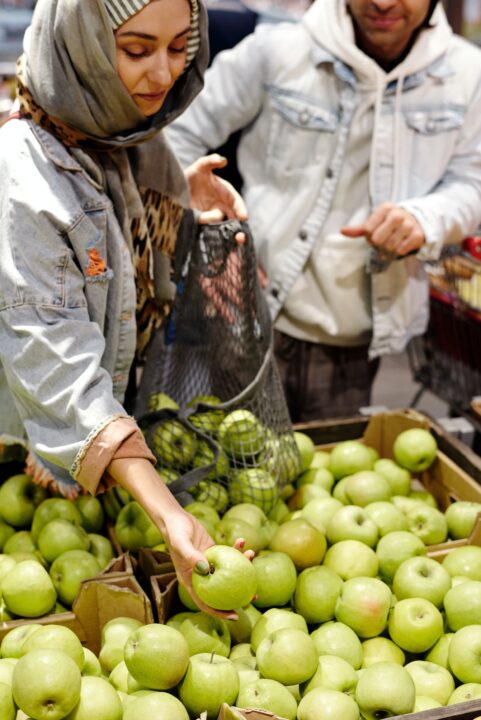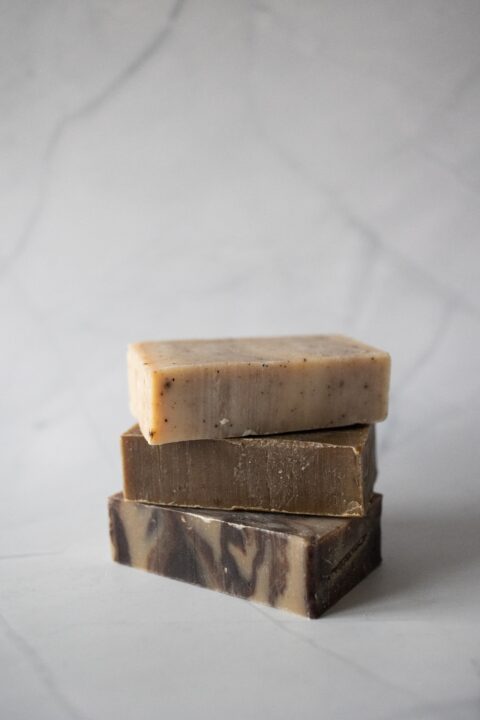Trash has engulfed the entire planet. As a result, going zero waste has become popular in society. Individuals and households today take unilateral actions to decrease trash, in contrast to the past, when we left garbage management to government institutions and manufacturers. This article offers doable advice on leading a waste-free lifestyle if you want to join the cause.
Our carbon footprint grows as a result of the amount of waste that humans produce. A record amount of garbage is being dumped in landfills. In the United States, people generate around 4.4 pounds of waste every day, according to an EPA study. These kinds of figures are causing discussions and lifestyle modifications.
What does zero waste mean?
A zero-waste lifestyle involves not just decreasing waste but also avoiding it as much as you can. We all know that one of the main polluting materials is plastic.
According to World Bank experts, 3.5 million tons of plastic and solid garbage are produced globally each day. This significant number necessitates personal accountability for bringing about constructive change in an effort to reduce waste.
People who live a trash-free lifestyle can quit buying things they don’t need, own what they do, and save money by reducing and reusing their garbage. Zero-waste living isn’t about perfection; it’s crucial to remember that. Making smarter decisions will benefit the environment, the world, and even ourselves.
Sadly, a large amount of our garbage and plastic waste tends to end up in our waters. Therefore, choosing plastic-free means eliminating things like plastic packaging as part of a zero-waste journey. Additionally, by using this method, we can conserve marine life and the oceans.
Despite the fact that living a zero-waste lifestyle may initially seem impossible, it is possible to attain it or at least get close to it. You’ll find important and easy methods that anyone may follow and use below, in addition to purchasing new things at retailers that don’t offer packages. Principles and discipline are prevalent throughout.
Important Tips
Remember the 4 Rs: refuse, reduce, reuse, and recycle to make the “how to get started” process simpler.
Reject or refuse to accept what you don’t need.
Reduce unnecessary items.
Reuse items you’ve used by giving them a new or second life.
If you can’t reject, reduce, or reuse the item, consider recycling.
The fifth, rot, is sometimes added to promote composting at home and help reduce food waste.
It’s not as difficult as it might seem to live a zero-waste lifestyle. You can change a lot with each step you take by starting small and being persistent, especially if you do it consistently. Below is a list of 15 zero-waste ideas to help you on your path, which you may use as a zero-waste recommendation.
15 Zero Waste Ideas for Homes
1. Prioritize sustainable clothing
Making sure every piece of clothing you purchase is sustainable is one of the most well-known zero-waste ideas. Particularly when there are discounts and other incentives available, people have a tendency to buy things on impulse. Usually, this results in throwing out things that don’t fit one’s lifestyle.
If you ever have the urge to buy anything on the spur of the moment, think again before you do so. Clothing companies that practice ethics and sustainability make their supplier and production networks transparent. This informs us of the products’ lifespan, including whether or not they biodegrade.
2. Reuse and Refill
-

Sarah chai, pexels, 7262984.jpg
Reusing and refilling containers at home is a good zero-waste idea to get into because it helps keep them from becoming waste. Glass jars, bottles, and plastic containers all fall into this category. This method disproves the notion that achieving low waste or zero waste entails just buying brand-new goods.
Instead of purchasing new containers for your home, you and your family can reuse existing ones. Old jam jars, shampoo bottles, and food packs are just a few examples of items you can reuse.
Additionally, a few durable items, like reusable tea bags, can allow you to drink more flavorful loose-leaf tea (from eco-friendly tea manufacturers) without the bag waste. Reusable alternatives to Ziploc bags and reusable plastic wrap are two further suggestions to assist you in replacing single-use packaging goods.
3. Make your own foods
When introducing your family to a zero-waste lifestyle, making and prioritizing fresh meals is essential. It lessens the persistent hankering for takeout.
When you order food, it typically comes in a lot of packaging, some of which may not even be necessary. Plastic packaging is also nearly universal with fast food. This produces a significant amount of plastic waste that will wind up in landfills and oceans.
4. Scrubbing in the bathroom
Toilet paper is a waste product, and it’s not usually produced in a sustainable manner. As an illustration, the carbon footprint of producing goods from 100% virgin fiber is three times greater than that of goods created from other forms of pulp.
A single roll of toilet paper requires 37 gallons of water to produce. You can also wash your hands with water after using the restroom.
Bidets are also crucial in this situation for simplifying the procedure. If installing a bidet attachment is practically out of the question, you might look at the growing selection of environmentally friendly toilet paper manufacturers that provide more sustainable options with less packaging.
The negative effects of using toilet paper can be reduced by simply switching to bamboo alternatives that don’t have the same negative environmental impact. You can also use plastic loofah substitutes and zero-waste body wash in the bathroom to reduce your use of plastic.
5. Purchase fruits and veggies free of plastic packaging
-

jack sparrow, pexels, 4198223.jpg
Fruits and vegetables come pre-packaged in plastic at many supermarket stores. These packaging materials add to the waste and pollution problem. Purchase produce that is not wrapped or contained in plastic if you want to avoid this.
The option to purchase items loose or pre-packaged without plastic is now available in grocery stores. If there are any farmers’ markets nearby, you can also choose to get fresh groceries there. local, fresher, plastic-free, and in support of nearby farmers. Naturally, buy only what you need to avoid wasting food.
6. Give out things you no longer need
Giving out is an easy way to give back and moves you closer to living a waste-free lifestyle. Donating may not immediately come to mind when people consider the zero-waste idea. However, it makes a big impact when you get rid of things you don’t need and donate them to people who do.
7. Repair instead of buying a new one
You can reduce the amount of waste you produce by learning a few sewing and repair techniques. This frequently involves apparel, particularly footwear. Small lifestyle adjustments you make at home are the first step in living a zero-waste lifestyle. You can avoid tossing away anything that has minor flaws by mending it. Items can be repaired, so you can use them for longer.
8. Prevent paper waste
Business cards, holiday cards, and junk mail all fall into this category. You must reduce paper waste deliberately and consciously to avoid it. A study found that Americans use 85,000,000 tons of paper annually. A typical family discards 13,000 different pieces of paper every year. Moreover, packaging and junk mail make up the majority of trash.
9. Construct compost piles
One of the best zero-waste ideas is composting. Even in an urban environment, within your home, or in your garden, you can make compost.
Landfills typically receive yard debris and food waste. Compost piles can be made using organic food scraps and garbage to avoid this. When these grow, they enrich soils with nutrients to provide plants with natural fertilizers as an alternative to synthetic fertilizers.
10. Adopt a slow-tech mindset
This refers to just owning technology that is consistent with your principles and values. This is in contrast to making purchases based on impulse, peer pressure, or what’s popular right now.
In actuality, concentrate on investing in high-quality, warranty-backed technology. With this, you can repair it rather than always purchasing it when something breaks.
Furthermore, you can buy used technology. The plastic packaging that new things often have is absent from these. Invest in rechargeable batteries for your toys, electronics, and other gadgets to prevent throwing away single-use ones. You may save extra packaging this way and lessen the environmental damage caused by technology.
11. Minimize water waste
It is impossible to disregard water waste. Your efforts to conserve water and minimize water waste at home also contribute to your zero-waste way of living.
Simple actions like turning off the faucet while doing the dishes or brushing your teeth make a big difference. There is a widespread zero-waste lifestyle. It is not simply confined to tangible goods, though they are important, but also to ways of thinking and acting.
12. Make use of all-natural and alternative cleaning supplies
There are harmful chemicals in many common cleaning solutions. They typically come in plastic bottles as well. When going zero-waste, changing to natural cleaning products is a significant lifestyle change.
You may either buy these items from zero-waste stores or manufacture your own at home with common components like baking soda, vinegar, and essential oils.
13. Replace plastic toothbrushes with bamboo and compostable ones
-

cottonbro studio, pexels, 3737579.jpg
Save money by avoiding non-recyclable toothpaste tubes and plastic toothbrushes. These little objects frequently wind up in landfills. Additionally, they take a very long time to decompose, polluting the environment.
To reduce waste, switch plastic toothbrushes for zero-waste alternatives and use zero-waste toothpaste to get clean without creating any garbage. The amount of used plastic brushes adds up, and since plastic-free alternatives are easy to obtain, you’ll find that implementing this zero-waste idea is simple.
14. Go for bar soaps
-

monstera production, 6621464.jpg
Replace the plastic bottles of liquid soap with bars of soap. Choose zero-waste substitutes for products like body wash, dish soap, or shampoo that come in single-use plastic bottles.
Shampoo and dish soap bars made from zero-waste materials are available in many zero-waste stores as substitutes. For merchandise that comes in bottle packaging, some businesses offer refills, though. By doing this, you can avoid having to buy new shampoo or dish soap bottles all the time, for instance.
15. Buying in bulk
Reduce the amount of packaging you bring into your home by making bulk purchases of your necessities. There is always the option to buy in bulk to cut down on plastic waste, whether it is for food, cleaning supplies, or personal care products.
Additionally, zero-waste retailers provide larger jars or containers of your preferred goods so you can have plenty for a longer time. Of course, bring your own containers or a reusable bag with you. Bulk purchasing reduces the carbon footprint of shipping when making online purchases.
Conclusion
Climate change is a result of improper handling and careless disposal of household and individual garbage. The trash that different homes produce has a big influence on the environment.
The zero-waste advice included in this article should serve as a guide for you as you adopt a zero-waste lifestyle and work toward your zero-waste objectives. These suggestions are straightforward and straightforward to incorporate into daily life.








